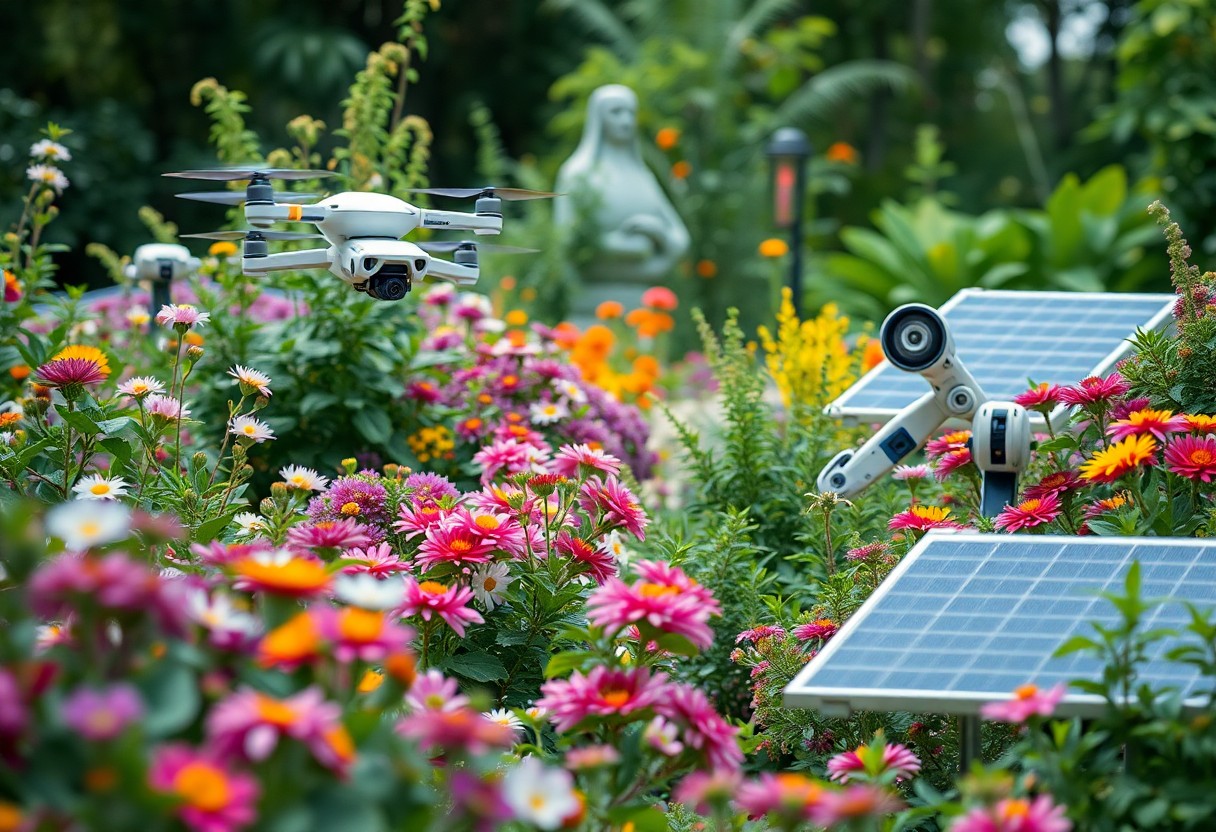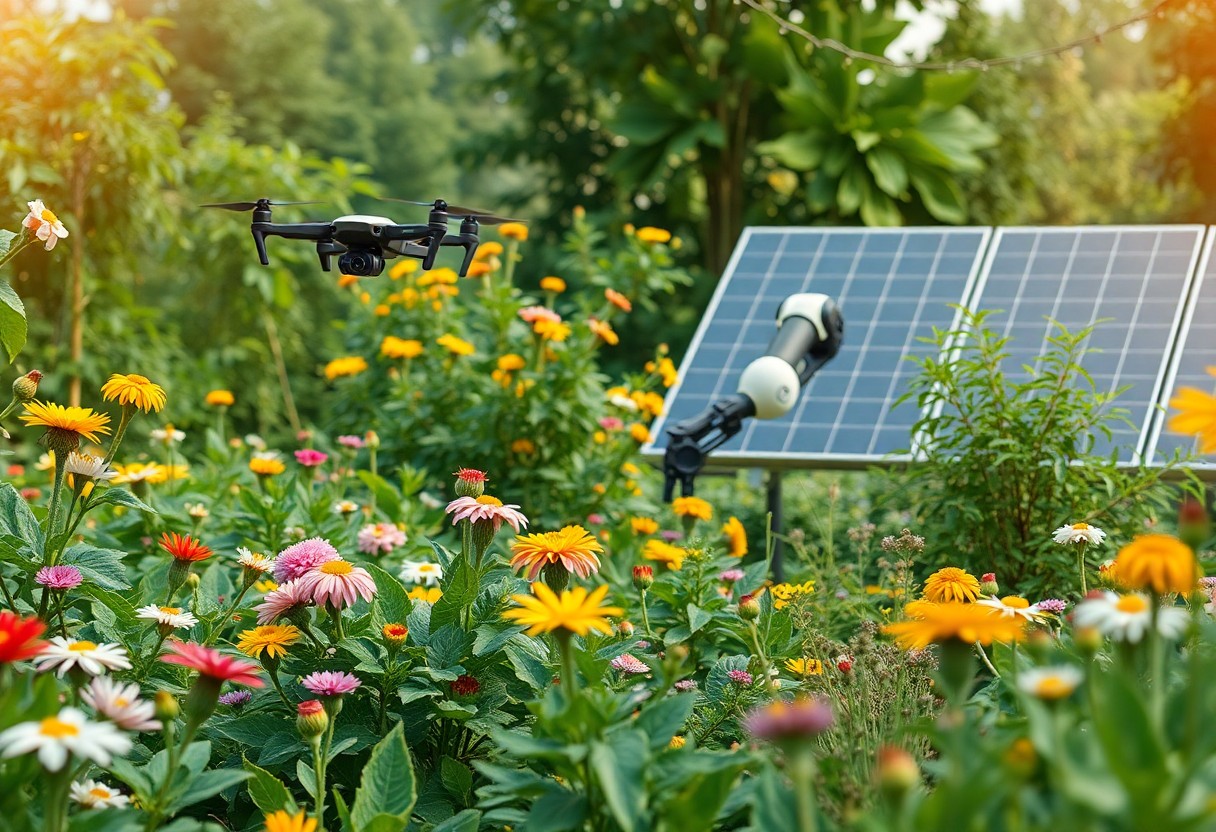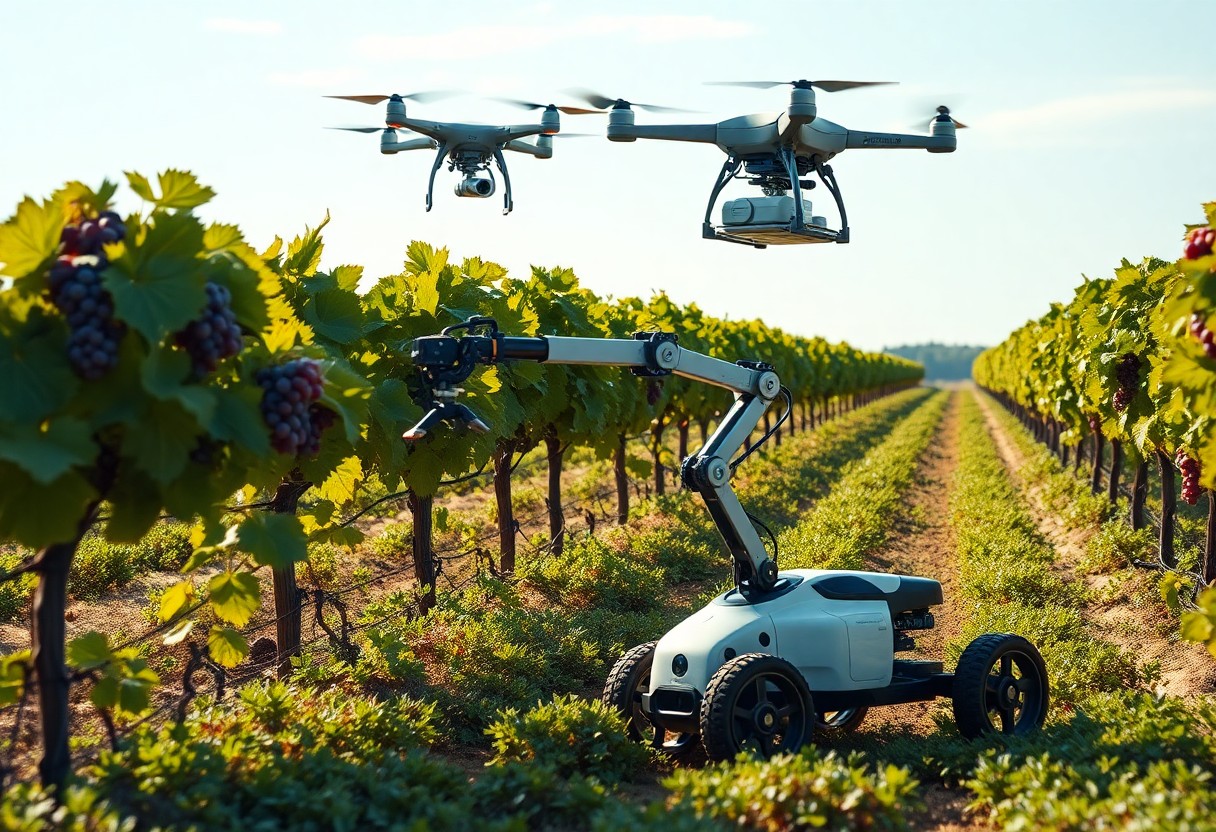It’s becoming increasingly clear that integrating technology into your garden can enhance rather than diminish nature’s beauty and functionality. Synergistic robotics blends innovative technology with traditional gardening practices, enabling you to manage your garden more efficiently while preserving its ecological balance. By utilizing these advanced tools, you can cultivate your plants, monitor soil health, and conserve water, all while fostering a harmonious relationship between nature and technology. In this blog post, we’ll explore how you can embrace these robotic innovations to transform your gardening experience.
Merging Mechanics and Mother Nature
You can witness an intriguing intersection between technology and nature, where tools designed to assist us in gardening not only enhance productivity but also nurture the ecosystem. The ingenuity of synergistic robotics lies in their ability to mimic natural processes, creating a seamless interaction that respects both ecological balance and human needs. By integrating sensors that monitor soil health, moisture levels, and pest populations, these robotic systems act almost like companions in the garden, promoting a rich, symbiotic relationship with the environment.
Defining Synergistic Robotics in Horticulture
Synergistic robotics in horticulture refers to the blend of intelligent robotic systems with natural gardening practices. These advanced machines are tailored to cooperate with plants, soil, and the ecosystem, ensuring that human intervention aligns with environmental preservation. For instance, robotics can be programmed to understand plant growth stages, adjust irrigation patterns, and selectively target pests without harming beneficial insects.
The Role of Automation in Sustainable Practices
Automation plays a transformative role in promoting sustainable garden practices, enabling you to cultivate plants with minimal resource waste. Smart irrigation systems, for example, utilize weather data and soil moisture readings to optimize water usage, reducing the risk of overwatering and conserving this precious resource. Furthermore, robotic weeders can remove problematic plants while protecting delicate flora, allowing for a healthier garden where biodiversity flourishes.
As automation becomes more integrated in your gardening routine, your approach to sustainability evolves. You could implement drones equipped with imaging technology for monitoring crop health, allowing for early assessment of problems without chemicals. Additionally, robotic pollinators serve to augment declining bee populations, ensuring that fruit and vegetable yields remain robust. These innovations demonstrate that when you merge mechanics with nature, the garden becomes not only a sanctuary for plants but also a model for conscientious stewardship of the earth.
Designing Robotic Systems for Ecological Balance
Creating robotic systems that support ecological balance entails a careful examination of how these technologies can work harmoniously within existing ecosystems. By incorporating adaptive algorithms, robots can respond to real-time changes in their environment, such as shifting weather patterns and pest populations. This responsiveness minimizes disruption, allowing nature’s processes to thrive while benefiting from technological advancements. Your gardens can then become a nexus of cooperation, where automated tasks facilitate rather than hinder natural growth.
Eco-friendly Materials and Energy Sources
Utilizing eco-friendly materials in robotics constructs systems designed for longevity and biodegradability. By opting for renewable resources and recycled components, you reduce the carbon footprint associated with production. Additionally, integrating solar panels or wind turbines can ensure that these robotic systems operate on clean energy, creating a sustainable synergy between technology and nature in your garden.
Precision Farming: Minimizing Waste While Maximizing Yield
Precision farming leverages data analytics and robotics to optimize resource use in your garden, ensuring that every drop of water and ounce of fertilizer counts. By employing sensors and imaging technologies, you can gather detailed information about soil health, moisture levels, and plant health, allowing for targeted interventions. This method not only conserves resources but also enhances productivity and yields.
Precision farming goes beyond mere efficiency; it revolutionizes how you engage with your garden. For instance, using drones equipped with advanced imaging technology can identify nutrient deficiencies or pest infestations at a granular level. This targeted approach allows for tailored fertilizing or pest management strategies, reducing excess application and minimizing chemical runoff. By closely monitoring plant growth and health, you can ensure that just the right amount of resources is used, promoting both healthier plants and a healthier environment. Adopting these practices can lead to an impressive 30% reduction in waste while potentially increasing your overall yield by as much as 20%.
The Impact on Biodiversity and Ecosystem Health
Integrating robotics into gardening can significantly enhance biodiversity and overall ecosystem health. By automating specific tasks like weeding, planting, and monitoring, these technologies can reduce the need for harmful pesticides and fertilizers that often compromise soil integrity and local flora. Additionally, robotic systems can help maintain more natural habitats within urban areas, ultimately fostering a diverse range of life. The result is a harmonious relationship between technology and nature that promotes resilience within ecosystems.
Enhancing Pollination and Soil Quality
Your garden can greatly benefit from robotic technology designed to enhance pollination and improve soil quality. Specialized robots can aid in the transport of pollen between flowers, ensuring optimal pollination rates that support healthy plant growth. Moreover, some systems integrate sensors that monitor soil conditions, providing real-time data about moisture levels and nutrient availability, thereby guiding your efforts to enrich the soil naturally.
Promoting Native Species Through Robotic Assistance
With robotic assistance, you can actively promote the growth and sustainability of native species in your garden. These technologies facilitate the planting, nurturing, and protection of local plants, which are imperative for maintaining regional biodiversity. By using robots to identify, track, and maintain native species, your garden can serve as a sanctuary for local wildlife and contribute to preserving the broader ecosystem.
Robots equipped with advanced sensors can analyze specific environmental conditions favorable for native plants, guiding you in selecting the right species to cultivate. For instance, drones can survey areas to identify native wildflower populations, allowing you to replicate those conditions in your garden. Additionally, automated weeding systems can target invasive species that threaten native plants, ensuring that your efforts to foster local flora are successful. By embracing robotic assistance, you create a thriving habitat that not only beautifies your space but also supports local wildlife and promotes a balanced ecosystem.

Human-Robot Collaboration: Bridging the Gap
Successful human-robot collaboration involves developing seamless interactions that support both gardeners and their robotic aids. By observing gardeners’ behaviors and preferences, robots can adapt to your methods, making the gardening experience more intuitive. Such collaboration means you gain assistance in routine tasks, allowing you to focus on creative aspects of gardening while fostering a deeper connection to nature through technology.
Training and Empowering Gardeners with Technology
Technology can be a powerful ally in your gardening journey. By integrating training programs that cover robotic operation and maintenance, you’ll feel more confident leveraging these tools. Workshops and community sessions can enhance your skills, empowering you not only to utilize robots effectively but also to innovate and experiment with your gardening techniques.
Emotional and Psychological Benefits of Garden Robotics
The integration of robotic technology in gardening can positively influence your psychological well-being. By reducing physical strain and providing assistance in labor-intensive tasks, robots can help lower stress levels and increase your enjoyment of gardening. Automated reminders and monitoring systems can keep you engaged, making your time spent in the garden even more fulfilling.
The emotional and psychological benefits of garden robotics extend beyond mere convenience. Studies show that engaging with nature significantly improves mood and reduces anxiety. With robots handling mundane tasks, you can dedicate more time to creative gardening endeavors, fostering a sense of accomplishment and connection to the environment. Moreover, as these technologies evolve, they could facilitate social interactions and community-building, enhancing your overall gardening experience.
The Future of Gardening: What Lies Ahead?
Your garden could soon become a blend of nature and cutting-edge technology, with the future promising innovative solutions to enhance sustainability and efficiency. As innovations like AI-driven systems and IoT devices become standard, they will work in harmony with nature, reducing resource waste and boosting the resilience of your garden ecosystem. By harmonizing smart technologies with building resilience, you can cultivate a thriving environment for both flora and fauna.
Innovations on the Horizon
You can expect advancements like autonomous drones for pollination, soil monitoring sensors, and AI-powered pest control in your future garden. These innovations will allow you to maintain an eco-friendly, sustainable space, while minimizing labor and resource inputs. Furthermore, advancements in machine learning will personalize gardening strategies based on specific microclimate data.
Societal Implications of Integrating Robotics in Gardens
The integration of robotics into gardens can revolutionize societal interactions with green spaces. You may witness a shift towards community-driven gardening projects, making gardening more accessible to urban populations. As technology advances, education around sustainable practices and robotics may become more integral in school curriculums, promoting an eco-conscious mindset from a young age.
Consider how societal dynamics will shift with the rise of robotic gardening tools. Urban communities could see a resurgence of interest in food sovereignty as autonomous systems facilitate more efficient, small-scale farming. Additionally, individuals with disabilities may find it easier to participate in gardening through adapted robotic aids. These changes could cultivate a more inclusive environment that fosters collaboration and shares knowledge between diverse community members, bridging generational gaps as traditional gardening methods merge with modern technology.
Conclusion
The potential for synergistic robotics to harmonize nature and technology in your garden is exciting and transformative. By integrating these advanced tools, you can enhance plant care, promote healthy ecosystems, and even optimize resource management. Embracing this technology allows you to foster a more sustainable and efficient gardening experience, creating a balance that benefits both your plants and the environment. As you explore this innovative approach, consider how these advancements can not only elevate your gardening practices but also contribute to a healthier planet.







